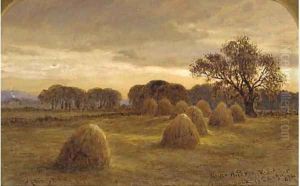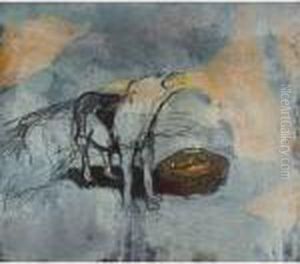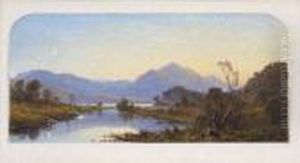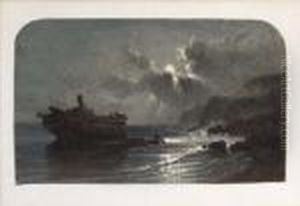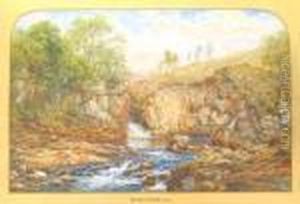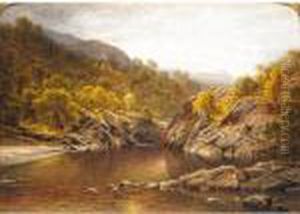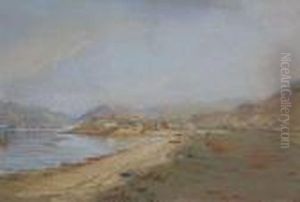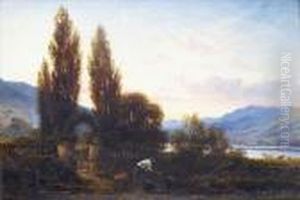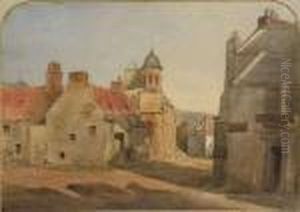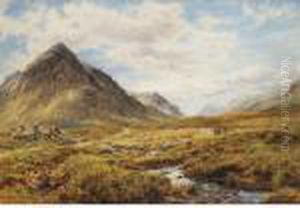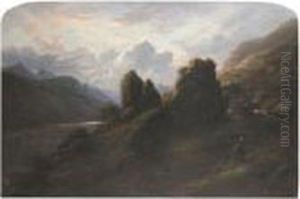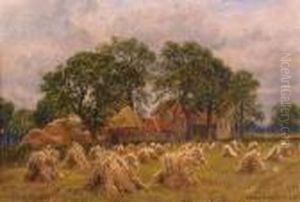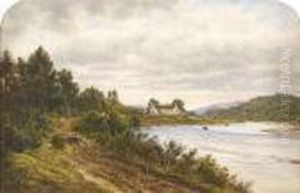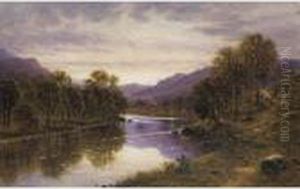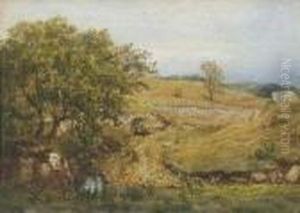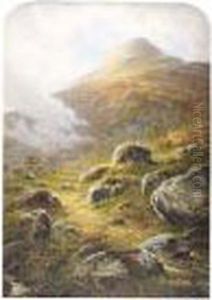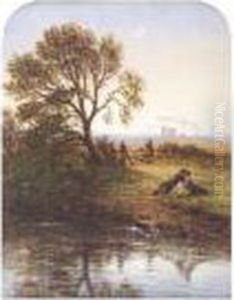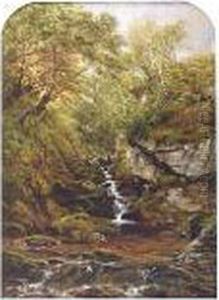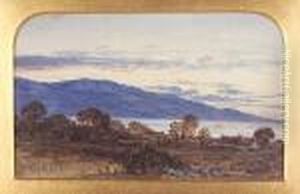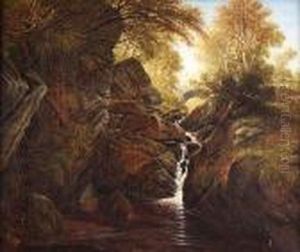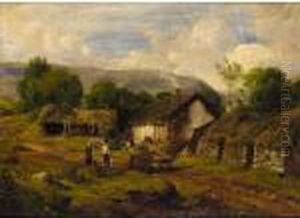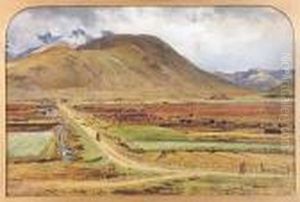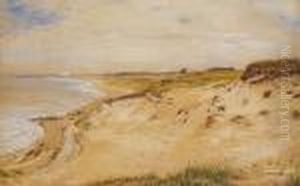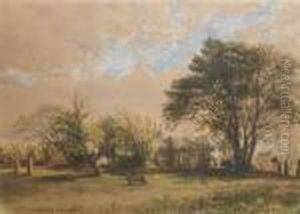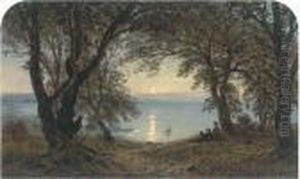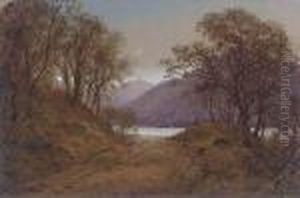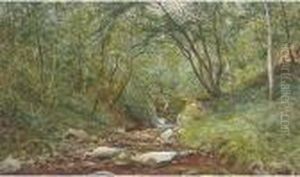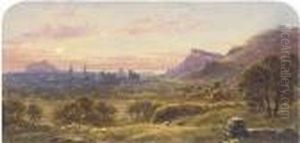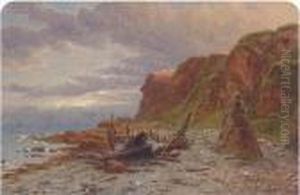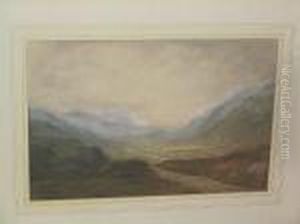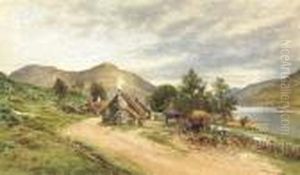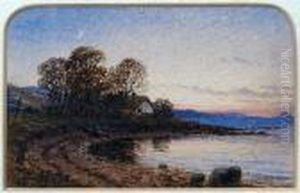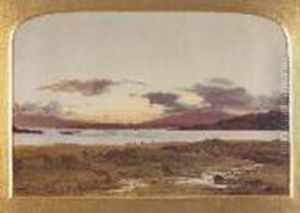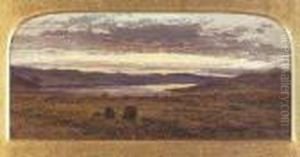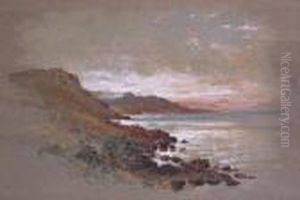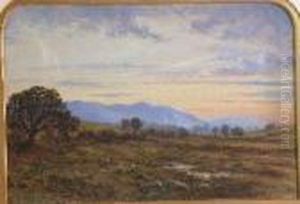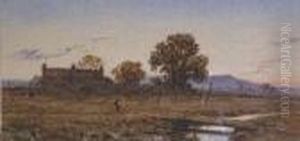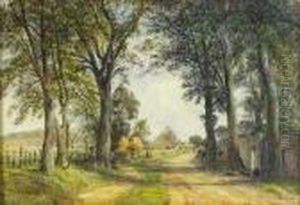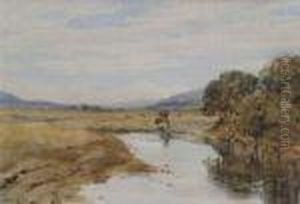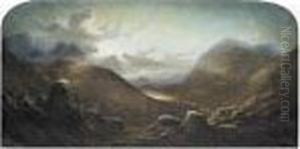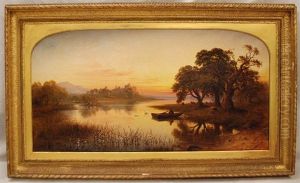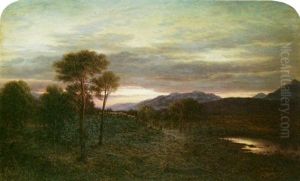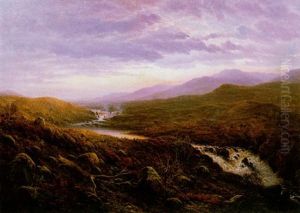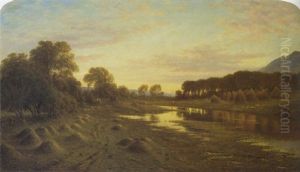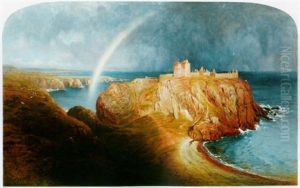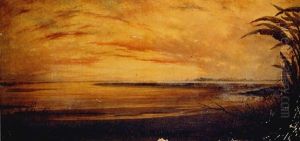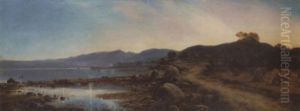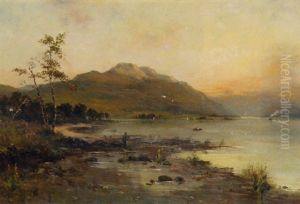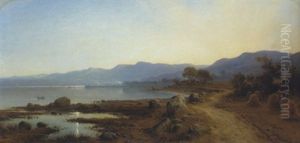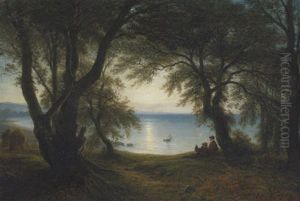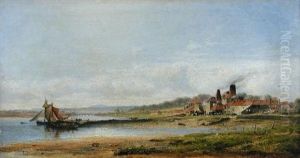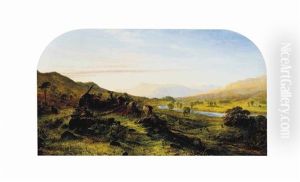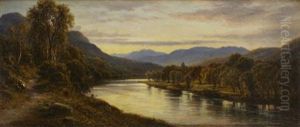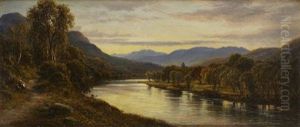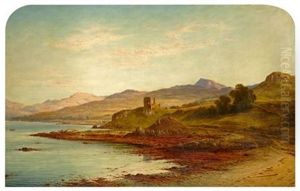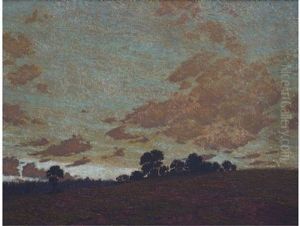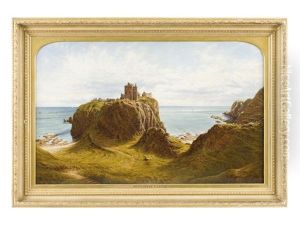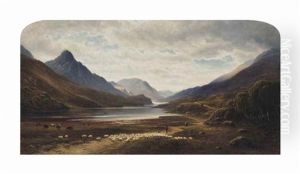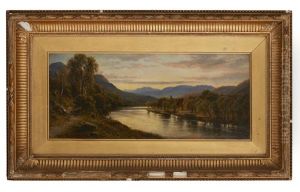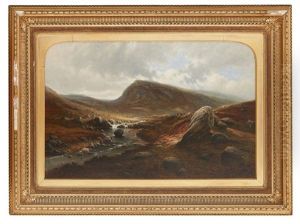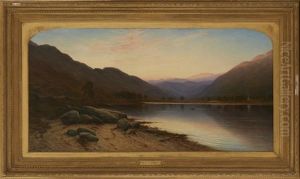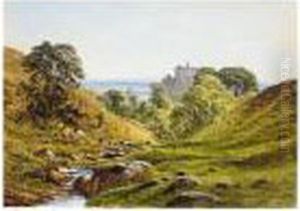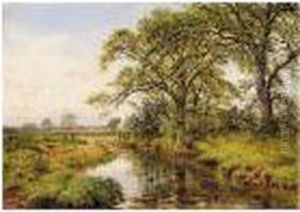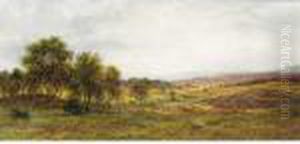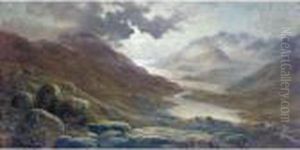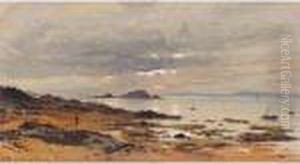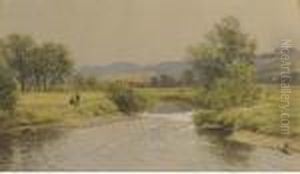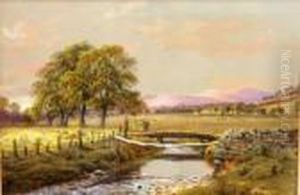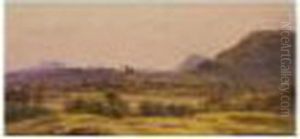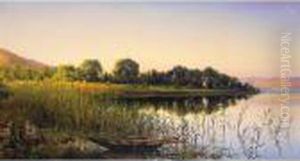Waller Hugh Paton Paintings
Waller Hugh Paton, born in Dunfermline, Fife, Scotland, on August 27, 1828, is remembered as one of the leading landscape painters of the Scottish school of the 19th century. His work is often categorized within the artistic movement known as the Scottish Pre-Raphaelites, reflecting a dedication to meticulous detail, vibrant colors, and a profound love for the Scottish landscape. Coming from a family with artistic inclinations—his brother, Joseph Noel Paton, was a notable figure in the realm of Scottish art as well—Waller Hugh Paton's journey into the world of art was both nurtured and encouraged from a young age.
Paton's early life was characterized by a deep connection with the Scottish countryside, which would come to be the primary subject of his extensive body of work. Initially trained in the art of wood engraving, Paton developed a precise and detailed style, which he later applied to his oil and watercolor paintings. His transition to painting was marked by his admiration for the works of John Ruskin and the Pre-Raphaelite Brotherhood, whose principles of fidelity to nature and attention to detail resonated with his artistic sensibilities.
Throughout his career, Paton exhibited a profound dedication to capturing the essence of the Scottish landscape, often imbuing his scenes with a sense of romanticism and mysticism. His paintings frequently featured the rugged Highlands, serene lochs, and ancient castles, rendered with a precision and clarity that highlighted not just the beauty of the landscape but also its emotional and historical resonance. Notable works include “The Sabbath Morn,” which exhibits his skill in capturing the tranquil and spiritual quality of the Scottish landscape, and “In Memoriam,” which reflects a deeper, more introspective exploration of nature and memory.
Paton's contributions to Scottish art were recognized in his lifetime; he was elected as a full member of the Royal Scottish Academy in 1865, an acknowledgment of his significant impact on the Scottish art scene. Beyond his paintings, Paton's legacy includes his influence on the appreciation of the Scottish landscape as a worthy subject for fine art, at a time when the industrial revolution was dramatically altering the natural and urban landscapes of Britain.
Waller Hugh Paton passed away on December 8, 1895, leaving behind a rich legacy of work that continues to be celebrated for its detailed portrayal of Scotland’s natural beauty and its embodiment of the Pre-Raphaelite commitment to precision and truth to nature. His paintings remain a testament to his love for and dedication to capturing the essence of the Scottish landscape, making him a pivotal figure in the history of Scottish art.
